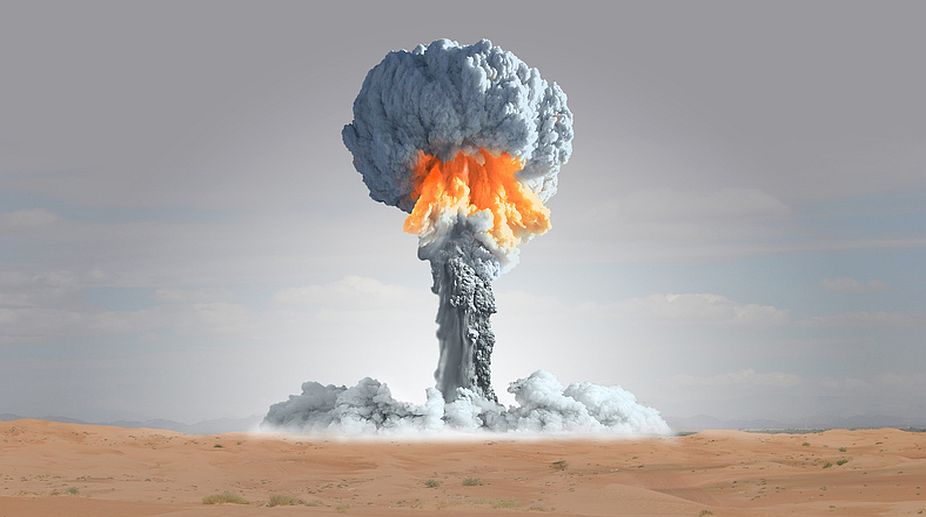There has been a growing perception among most observers that the United States no longer has an appetite to indulge in conflict beyond its shores, especially when it comes to manpower. Contrary to this, the Trump administration has already used force, or its threat, on two occasions in less than a fortnight. On 6 April it launched 59 Cruise missile against an airfield in Syria, purportedly in response to Syria’s alleged use of chemical weapons. Subsequently, after a meeting between Russian President Putin and Secretary of State Tillerson, the latter noted that “there is a low level of trust between our countries … the world’s two foremost nuclear powers cannot have this kind of relationship.”
Given early speculation about Trump and Putin sharing a warm relationship, it is too early to see whether this attack will impact President Trump’s declared position of reaching out to Russia; possibly Trump’s team may be working on the premise that Syria will continue to be an area of divergence, while the US and Russia try to accommodate each other’s interests in other regions. Trump noted that he gave an order to launch the Cruise missiles on Syria while having a “beautiful piece of chocolate cake” with Chinese President Xi Jinping. This cultivated casualness could be designed to generate the view that US foreign policy is unpredictable, in order to deter both friends and foes from taking anti-US measures.

On 13 April the US used a Massive Ordnance Air Blast (MOAB) in Afghanistan, regarded as the largest nonnuclear bomb. This gave some credence to the view that there is a significant ISIS presence in Afghanistan that poses a threat. But MOAB was used without any signal that the US might be scaling-up its footprint in Afghanistan, and the efficacy of the bomb is itself in doubt. By using this weapon the US was demonstrating it has the technological edge and a leadership ready to use disproportionate force at short notice, and probably to intimidate North Korea on the latter’s nuclear and missile programme, particularly since the decision was taken during a dinner with Chinese President Xi Jinping, North Korea’s only ally.
The North Korean regime considers its survival dependent on possession of nuclear weapons, and will expend considerable resources to resist pressures to limit its weapons programme. For US allies Japan and South Korea, North Korea poses a real threat, joined by anxiety in the US that long-range North Korean missile capability will constitute a new and significant security challenge.
In response to this evolving scenario, Trump decided to upgrade the regular US-South Korean military exercises that take place in March-April each year. An aircraft carrier strike group is nearing the Korean peninsula after exercises with Japanese destroyers. A nuclear-powered submarine with Cruise missiles has berthed in South Korea. The US Senate was summoned by Trump for a briefing, and he called for UN Security Council sanctions on Pyongyang. While this suggests that Trump is threatening North Korea with armed intervention, he must certainly be aware of the enormous loss of devastation and human life that will be an inevitable consequence.
North Korea may not agree to cap its weapons programme despite the growing US presence and its new antimissile deployment in its neighbourhood. The current round of posturing could result in another round of a dialogue process involving regional powers led by China. An optimistic assessment may look misplaced at the moment, but the possibility of an American President visiting Myanmar was inconceivable a decade ago, and come May, the season for annual South Korea-US military exercises, to the accompaniment of excessive Pyongyang rhetoric, will come to an end.
These recent developments display the US ability to deploy force in distant parts of the world, and to operate simultaneously in different regions. More basically, Trump appears prone to use military strength in preference to diplomacy, despite past experience proving that use of force is no answer to the subtle challenges of international relations. Subtlety is clearly no part of Trump’s make-up, and significant funding cuts in the budget for the State Department reinforce this suspicion.
These shows of force do not suggest an isolationist approach, nor adherence to liberal strategies of restructuring societies and politics in other countries. It appears that the Trump administration is adopting an offshore posture of proactive and spasmodic interventions, which avoid the costs of long-term interventions and address the concern among allies of abandonment by Washington. Given the low cost associated with this approach, there may be a temptation to intervene frequently. Nevertheless, it may rightly be questioned whether brief intervention can remain so.
The writer is a Senior Consultant with ICRIER, New Delhi.












